RESEARCH PROFILE
Herman van der Kooij is a full professor in Biomechatronics and Rehabilitation Technology and chairs the Department of Biomechanical Engineering at the University of Twente (UT). In addition, Van der Kooij holds a part- time position Delft University of Technology. The department Biomechanical Engineering at the UT consists of an academic staff of 18 FTE, a support staff of 10 FTE, and more than 40 PhD candidates and postdoctoral fellows. His research extends from studying human movement control by combining experimental techniques with computer simulations of the biomechanics and neural circuits (neuromechanics) to mechatronic design of rehabilitation and wearable robots (with a focus on exoskeletons and bionic prosthesis), interaction control and intuitive human-machine interfaces. His research interests are design and control of medical robots, computational neuroscience and novel experimental techniques to study (impaired) human movement control. Herman is known from his contributions in better understanding human locomotion and balance control, where he combined perturbation experiments with models that were able to predict human responses obtained from these unique perturbation experiments. From these models, he developed biological inspired controllers for the control of rehabilitation robots, exoskeletons, and bionic prosthesis. Van der Kooij’s group developed iconic robots for healthcare like the gait rehabilitation robot LOPES I and II and exoskeletons for (in)complete spinal cord injured individuals, like the Mindwalker and the Symbitron exoskeleton. The LOPES I publication is the most cited IEEE TNSRE paper ever and the Mindwalker publication received the IEEE EMBS most impactful paper award in 2019. These and other devices are clinically evaluated with various medical partners he collaborates with. Van der Kooij research has also resulted in improvement of commercial rehabilitation robots, exoskeletons, and bionic prosthesis via contract research, technology transfers and spin out companies of his research.
ACADEMIC BACKGROUND
Herman van der Kooij received his PhD cum laude from the University of Twente. He started as an assistant professor in Department of Biomechanical Engineering in 2002 and was promoted to full professor in 2010. From 2008 he is also affiliated with Delft University of Technology, from 2011 as full professor. In 2010-2011 he spends a year as visiting professor at the The École Polytechnique Fédérale de Lausanne (EPFL) in the Biorobotics laboratory headed by Prof. Auke IIspeert.
He was awarded the prestigious personal grants VIDI and VICI of the NWO (Dutch Research Council) in 2001 and 2015 respectively. With the VIDI grant he developed the world famous and the first compliantly actuated gait rehabilitation robot LOPES to assist physical therapists in gait training, The main publication from this project is the one of the most cited papers of the number one journal in his field of research, the IEEE Transactions on Neural Systems and Rehabilitation Engineering. With the VICI project he developed flexible robotic exosuits to support (in)complete spinal cord individuals and stroke survivors and novel control algorithms for these devices.
Prof. van der Kooij supported 28 students as promotor. Van der Kooij is PI in numerous NWO-TTW projects and five interdisciplinary collaborative TTW Perspective programs in human-robot interaction, rehabilitation technology, and robotics for healthcare. In these projects he regularly collaborates with other Dutch Universities (TUE, TUD, WUR, RUMC, Free University, RUG), knowledge institutions, SMEs, and patient organizations. In particular, van der Kooij initiated and coordinates the TTW Perspective program Wearable Robotics (2018-2023) in which 5 Universities and more than 27 non-academic partners collaborate to develop wearable robotic technlogiy to augment human physical performance. He also participated in 8 EU funded collaborative projects. Most notably is the FP7 project Symbitron (2013-2017) that was initiated and coordinated by van der Kooij in which the University of Twente (UT), The Netherlands Ecole Polytechnique Fédérale de Lausanne (EPFL), Technical University of Delft (TUD), Imperial College of Science, Technology and Medicine (ICSTM), Santa Lucia Foundation (FSL), Össur developed a modular exoskeleton using biological inspired controllers. The device was developed and evaluated with 10 (in)complete spinal cord patients. Incomplete SCI individuals walked faster with the device and recovered better compared to traditional treatment. Van der Kooij also founded the first national program in the world on Soft Robotics. This 4TU Soft Robotics (2018-2023) funded 7 tenure trackers who were supported by 7 postdocs.
Van der Kooij was member of the management team of University of Twente’s strategic impulse program Robotics (2018-2022) that he initiated. He is now member of the management team of robotics centre of the University of Twente. He is founding member and one the research leaders of the Interdisciplinary Consortium for Clinical Movement Sciences & Technology (ICMS), a scientific partnership between Sint Maartenskliniek, Radboudumc, Universiteit Twente and Roessingh Research & Development. He was part of the steering committee or the IMDI NeuroControl that is Centre of Research Excellence focusing on development of innovative tools for treatment and prevention of disabilities caused by neurological diseases. He is the president elect of the International Consortium for Rehabilitation Robotics (ICORR).
He has acted as associate editor of IEEE Transactions on Biomedical Engineering (2010-2020) and of IEEE Robotics and Automation Letters (2015-2019). Van der Kooij is (co-)author over 210 publications in the area of robotics, biomechanics, rehabilitation (engineering), and neuroscience. He has an H-index of 54 in Scopus and 65 in Google Scholar (over 16,000 citations). He has given over 100 invited lectures including many keynote or plenary presentations at international conferences, including Adaptive Motion of Animal and Machines (2019), the world congres of the International Society of Posture and Gait Research (2019), the IEEE International Conference on Robotics and Automation (2016) and the International Conference NeuroRehabiliation (2018). He helped in organising many international academic events. In particular, he was the general chair of the IEEE RAS/EMBS International Conference on Biomedical Robotics & Biomechatronics in 2018 (Enschede), was the general chair of IEEE International Consortium for Rehabilitation Robotics in 2022 (Rotterdam).
20 September 2012 I gave my inaugural lecture that gives an overview of my research activities, and my view on education. An extended version of this lecture can be downloaded from here (only in Dutch).

CV
Expertise
Medicine and Dentistry
- Exoskeleton
- Ankle
- Joint
- Walking
- Gait
Engineering
- Joints (Structural Components)
Computer Science
- Control
- Robot
Organisations
Publications
2025
Other contributions
Full searches
Collaborations
- Biomechanical engineering, the technical university of Delft
- Bob Peterka from the Oregon Science Health Institute
- Jules de Wald from the rehabilitation institute of chicago
- Mark Carpenter from.the University of British Columbia
- Roessingh Research and Development
- Thomas Mergner from the Neurozentrum in Freiburg
First author Journal publications
- van der Kooij, H., R. Jacobs, et al. (1999).A multisensory integration model of human stance control. Biological Cybernetics 80: 299-308.
- van der Kooij, H., R. Jacobs, et al. (2001).An adaptive model of sensory integration in a dynamic environment applied to stance control. Biological Cybernetics 84: 103-115.
- Van der Kooij, H., Jacobs, R., Koopman, B., Van der Helm, F. (2003). An alternative approach to synthesizing bipedal walking. Biological Cybernetics, 88 (1), pp. 46-59.
- van der Kooij, H., E. van Asseldonk, et al. (2005).Comparison of different methods to identify and quantify balance control. Journal of Neuroscience Methods 145(1-2): 175-203.
- van der Kooij H, de Vlugt E. (2007). Postural responses evoked by platform pertubations are dominated by continuous feedback. J Neurophysiol. 98(2):730-43.
- Van Der Kooij, H., Van Asseldonk, E.H.F., Geelen, J., Van Vugt, J.P.P., Bloem, B.R. (2007). Detecting asymmetries in balance control with system identification: First experimental results from Parkinson patients. Journal of Neural Transmission, 114 (10), pp. 1333-133751.
- Van Der Kooij, H., Peterka, R.J.(2011). Non-linear stimulus-response behavior of the human stance control system is predicted by optimization of a system with sensory and motor noise/ Journal of Computational Neuroscience, 30 (3), pp. 759-778.
- Van der Kooij, H., Campbell, A.D., Carpenter, M.G.(2011). Sampling duration effects on centre of pressure descriptive measures. Gait and Posture, 34 (1), pp. 19-24.
- Van der Kooij, H., Fricke, S.S., van’t Veld, R.C., Vallinas Prieto, A., Keemink, A.Q.L., Schouten, A.C., Van Asseldonk. E.H.F.(2022), Identification of hip and knee joint impedance during the swing phase of walking, TNSRE, 30, pp. 1203-2012.
- Herman van der Kooij and Edwin H. F. van Asseldonk and Massimo Sartori and Chiara Basla and Adrian Esser and Robert Riener, AI in therapeutic and assistive exoskeletons and exosuits: Influences on performance and autonomy, Science Robotics, 30 Jul 2025, Vol 10, Issue 104, eadt7329.
Supervised PhD Thesis
- Design and Evaluation of the Gait Rehabilitation Robot Lopes. Veneman, Jan Frederik (2007).
- Restitution and Compensation in the Recovery of Function in the lower Extremities of Stroke Survivors: Design of Evaluation and Training Methods. Edwin hendricus Franciscus van Asseldonk (2008).
- Development of novel devices for upper-extremity rehabilitation. Adrianus Hubertus Arno Stienen (2009).
- The contribution of each leg to bipedal balance control. Tjitske A. Boonstra (2013).
- Robotics combined with electrical stimulation: hybrid support of arm and hand for functional training after stroke. Ard J Westerveld (2014).
- Identification of connectivity in human motor control: exciting the afferent pathways Sanne Floor Campfens (2014).
- Robot aided gait training and assessment: development of support strategies and assessment methods for LOPES Bram Koopman (2014).
- Design of a robot-assisted gait trainer: LOPES II. Johannes Hendricus Meuleman (2015).
- Quantifying balance control during stance: a multivariate system identification approach. Denise Engelhart (2015).
- Human-Exoskeleton Interaction. Wietse Van Dijk (2015).
- Haptic Physical Human Assistance. Arvid Keemink 2017).
- Foot Placement in balance recovery - complex humans vs simple model (suma
cum laude). Mark Vlutters (2017). - TIBAR Therapist Inspired Balance Assisting Robot. Juliet Haarman ( 2017).
- Trans-Spinal Direct Current Stimulation for the Modulation of the Lumbar Spinal Motor Networks. Alexander Kuck ( 2018).
- Haptic human-human interaction: motor learning & haptic communication. Niek Beckers (12 July 2019).
- Towards postural balance control of exoskeletons. Amber R. Emmens (8 May 2020).
- Towards personalized robot-assisted gait training. Simone S. Fricke (10 July 2020)
- Assessing Balance Control After Minor Stroke. Moving from laboratory towards clinic. Ingrid M. Schut (30 September 2020).
- Towards the next Generation in Human-machine-interfacing: Controlling Wearable Robots via Neuromusculoskeletal Modelling. Guillaume Durandau (6 November 2020).
- Integrated Spasticity Assessment and Treatment using Disentangled Joint Resistance. Ronald van 't Veld (25 May 2022).
- Functional assistive devices to support the impaired shoulder and hand. Claudia Haarman (29 September 2022).
- Recovering linear and angular momentum during walking. Michelle van Mierlo (11 May 2023).
- Towards the adoption of wearable exoskeletons in occupational workspaces: model-based assessment and control of back-support exoskeletons. Alejandro Moya Esteban (7 December 2023).
- Robust and versatile control of lower limb exoskeletons. Wolfgang Rampeltshammer (11 December 2023).
- Hydrostatic acutation for wearable robotoics. Kyrian Staman (10 October 2024).
- Autonomous balance control of underactuated torque-controlled lower-limb exoskeletons for paraplegic users. Ander Vallinas Prieto (15 November 2024).
- The Duchenne ARm ORthosis Project; Advancing motorized arm support technology for severe muscle weakness. Suzanne Filius (2 May 2025).
- Additive manufacturing of soft robots based on graded porous stuctures, Nick Willemstein (9 May 2025).
Research profiles
Courses academic year 2025/2026
Courses in the current academic year are added at the moment they are finalised in the Osiris system. Therefore it is possible that the list is not yet complete for the whole academic year.
- 193640999 - Internship BME
- 193650999 - Masters Assignment
- 195799152 - Internship
- 202000249 - Master Graduation Assignment
- 202000250 - Internship
- 202200120 - Internship ROB
- 202200122 - MSc-Thesis Project
- 202300349 - Internship ROB / ME
- 202400318 - M12 BSc Assignment BMT
- 202500385 - Internship ROB / AM
- 202500508 - MSc-Thesis Project ROB / NT
Courses academic year 2024/2025
- 191150460 - Biomechanical Eng. - Capita Selecta
- 191199154 - Internship
- 191199198 - Master Graduation Assignment
- 193640999 - Internship BME
- 193650999 - Masters Assignment
- 195799152 - Internship
- 201200133 - Biomechatronics
- 201900215 - Master Graduation Assignment
- 202000249 - Master Graduation Assignment
- 202000250 - Internship
- 202200120 - Internship ROB
- 202200122 - MSc-Thesis Project
- 202300236 - Combined Final Project EmSys/BME
- 202300349 - Internship ROB/I-TECH
- 202300364 - Graduation Project SC-ME
- 202400318 - M12 BSc Assignment BMT
- 202400812 - Graduation Assignment (M-ME)
- 202400813 - Graduation Assignment (M-IDE)
Current projects
AWARD (STW)
VICI: Flexible Robotic suit
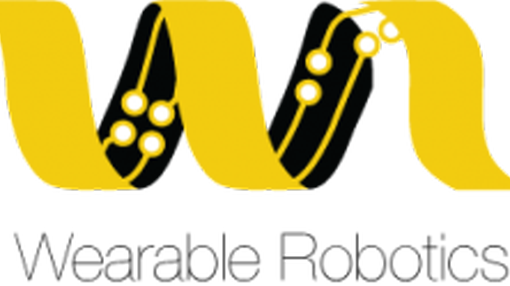
TTW Perspectief programme Wearable Robotics
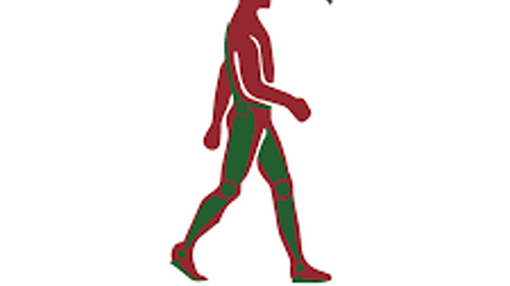
Symbitron Plus Cybathlon team
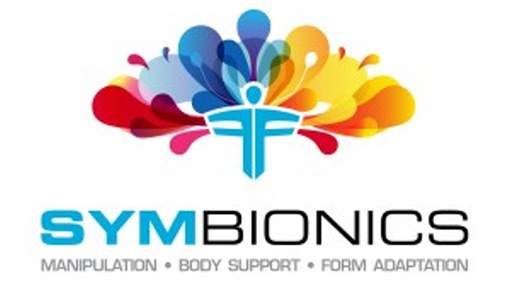
STW Perspectief Programme Symbionics

TTW Perspectief programme: NeuroCimt
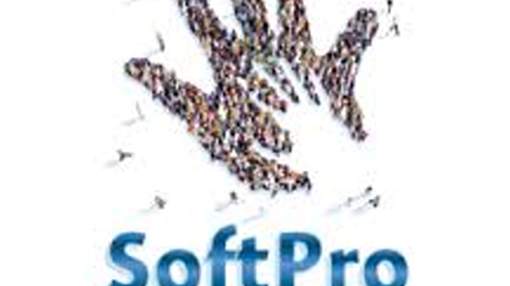
Horizon 2020: SoftPro
Finished projects

Balance (EU)
Balance Augmentation in Locomotion, through Anticipative, Natural and Cooperative control of Exoskeletons.

Symbitron (EU)
Symbiotic man-machine interactions in wearable exoskeletons to enhance mobility for paraplegics
NEURAS (ZonMW)

Mindwalker (EU)
The project addresses 3 main different fields of expertise: (1) BCI technologies, (2) Virtual Reality and (3) Exoskeleton Mechatronics and Control.
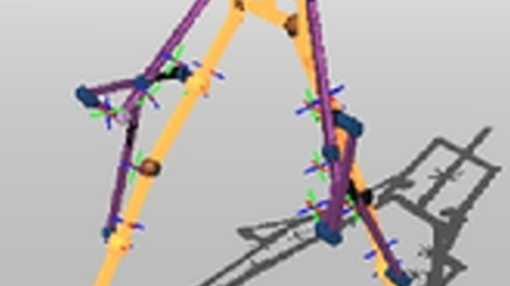
Evryon (EU)
The goal of the EVRYON project is to develop a novel approach for the design of Wearable Robots (WRs)
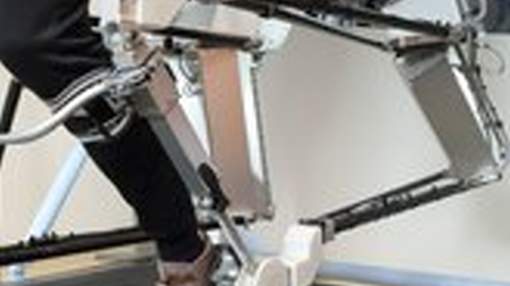
LOPES (PIDON)
The goal of the LOPES project (LOwer-extremity Powered ExoSkeleton) is to develop a robotic device (LOPES) for gait training and assessment of motor function in stroke survivors
Watch our research on YouTube
In the press
Media Coverage: Television & Radio
- October 14 2017: The ankle exoskeleton Achilles in Dutch television program “Klaas kan alles”
- January 12 2016: A lot of our research in Dutch popular science program for children het Klokhuis: “Looprobots”
- September 30, 2013: Mindwalker in Euronews: “Exoskeletons on the March”
- September 25, 1011: Lopes in BBC news: “Robo legs help stroke victim to walk”
- October 3, 2011: Lopes in SBS6 Hart van Nederland: “Robot is doorbraak in revalidatie”
- January 12, 2011: Lopes on Reuters: “ Robot legs help stroke survivors to walk again”
- April 5, 2011: Lopes in NTR-VPRO program Labyrinth: “De machinemens”
- November 19, 2008: Lopes in Vara’s Nieuwslicht: “Robot benen helpen mensen sneller op de been”
Media Coverage: Newspapers & Magazines, etc
- March 3 2018, interviewed for NRC Handelsblad: “Het Exoskelet kan de hindernis baan op”
- March 2 2018, interview for Tubantia/ AD: “Weer lopen in een exoskelet”
- July 2017, interviewed for book “hallo robot” from Bennie Mols and Nieske Vergunst
- July 2017, interviewed for podcast e-book leven.metrobots.nu from Bennie Mols and Karin van den Boogaert
- Nov 2014, LOPES II in De Ingenieur,: “Weer leren lopen: robot ontlast fysiotherapeut”
- Sep 19, 2014, LOPES II in Bits & Chips,: “Looprobot zet stap naar commerciële versie”
- May 9, 2014,LOPES II in De Gelderlander, , : “Robot leert patiënten in kliniek weer lopen”
- May 8, 2014, LOPES II op RTLnieuws site,: Looprobot Lopes II is een grote stap vooruit”
- May 6, 2014, LOPES II op nu.nl,: “Klinieken zetten nieuwe looprobot in voor revalidatie patienten”
- September 6, 2013: Mindwalker in de Ingenieur: “Exoskelet laat verlamde lopen”
- June 7, 2014: Mindwalker in de New Scientist: “Exoskelet laat verlamde mensen lopen”
- May 30, 2014: Mindwalker in Horizon the EU Research and Innovation Magazine: “Walking again with an exoskeleton”
- September, 2011: Lopes in Fysiopraxis
- February 16,2010: Interview Herman van der Kooij en Wietse van Dijk in Volkskrant: “Hersenen activeren futurtische robotbenen”
- November 2009 Lopes in Made in Holland: “Rehabilitation robots”
- October 17, 2009: Lopes in Twentsche Courant Tubantia: “ De robot helpt een handje”
- September 29, 2009: Lopes in NRC Hadelsblad: “Therapeut met stalen rug”
- June 13, 2009: Lopes in de Volkskrant: “Leren omgaan met mensen”
- February 25, 2009: Promovendus Arno Stienen in Medical facts.
- December 16, 2008: Lopes in Metro: “Nieuwe Twentse robot zorgen voor vergaande fysiotherapie”
- June 13, 2008: Lopes in Twentsche Courant Tubantie.
- Lopes in Technisch weekblad.
- July 12, 2007, Jan Veneman’s PhD project in Bits&Chips: “Exoskelet leert lopen”
- September 25, 2003: Interview Herman van der Kooij Volkskrant: “Mensen viruteel nabootsen”
Address
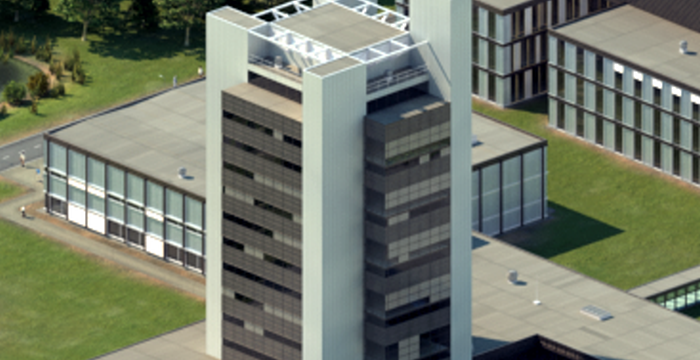
University of Twente
Horst Complex (building no. 20), room W112
De Horst 2
7522 LW Enschede
Netherlands
University of Twente
Horst Complex W112
P.O. Box 217
7500 AE Enschede
Netherlands